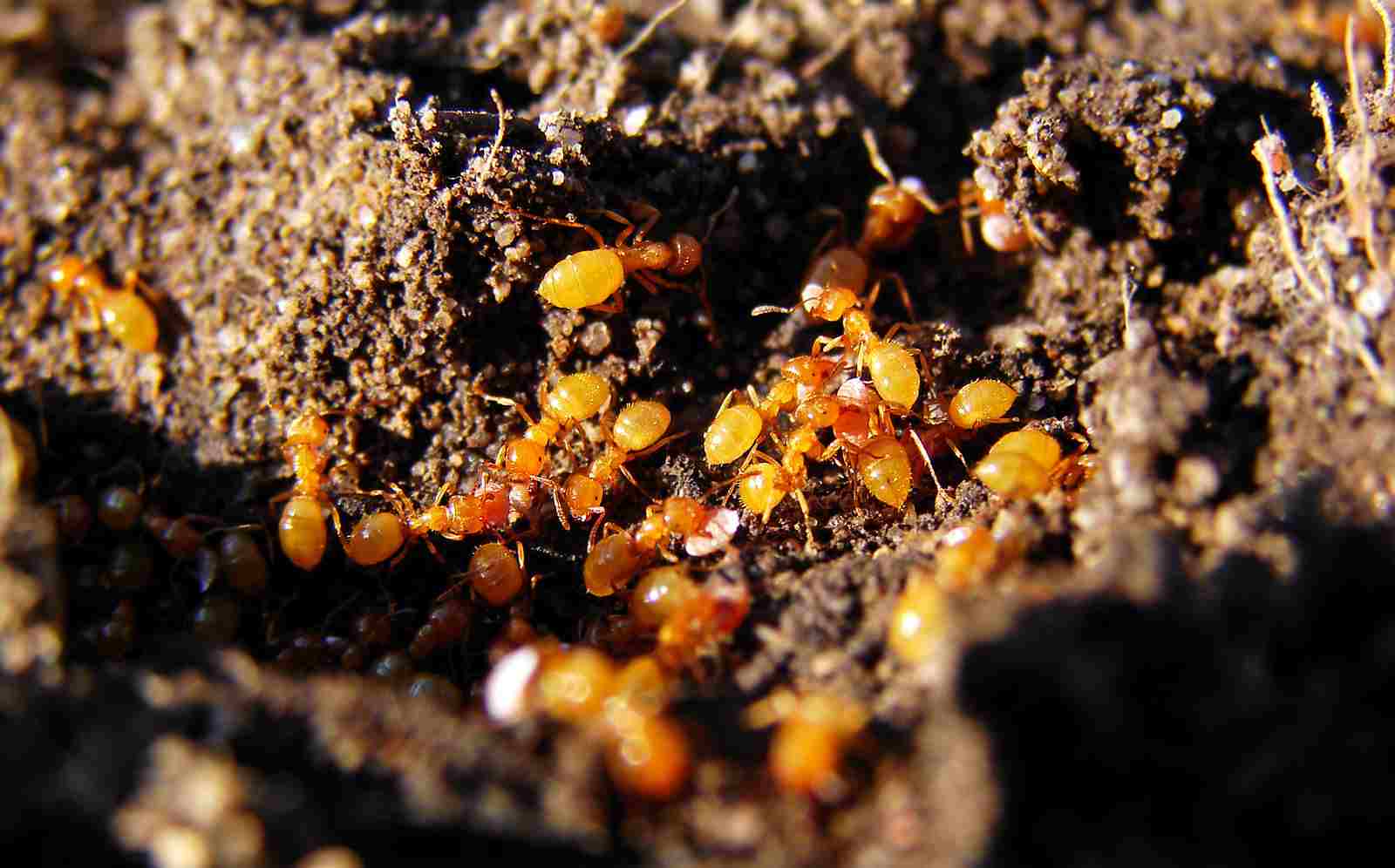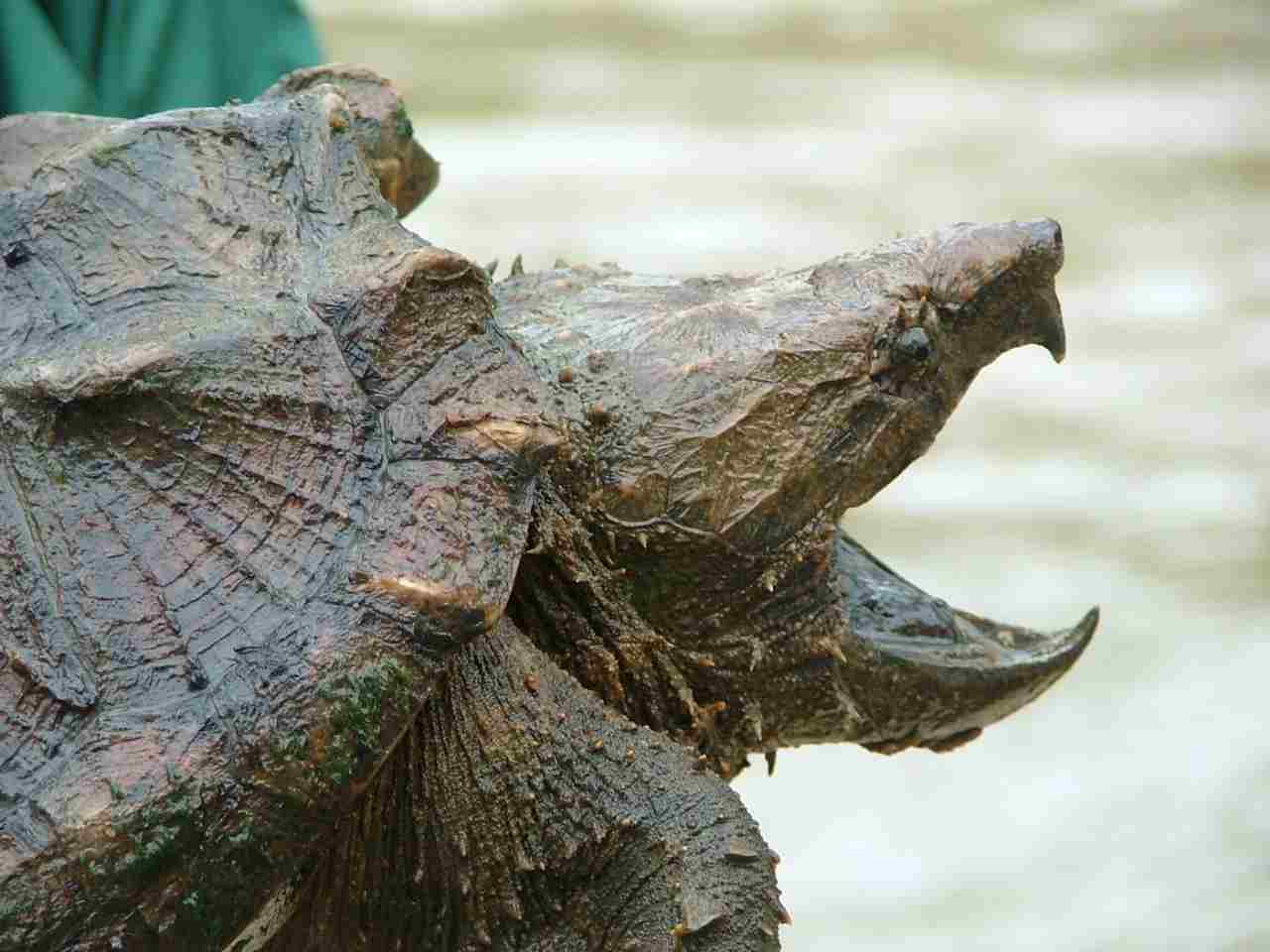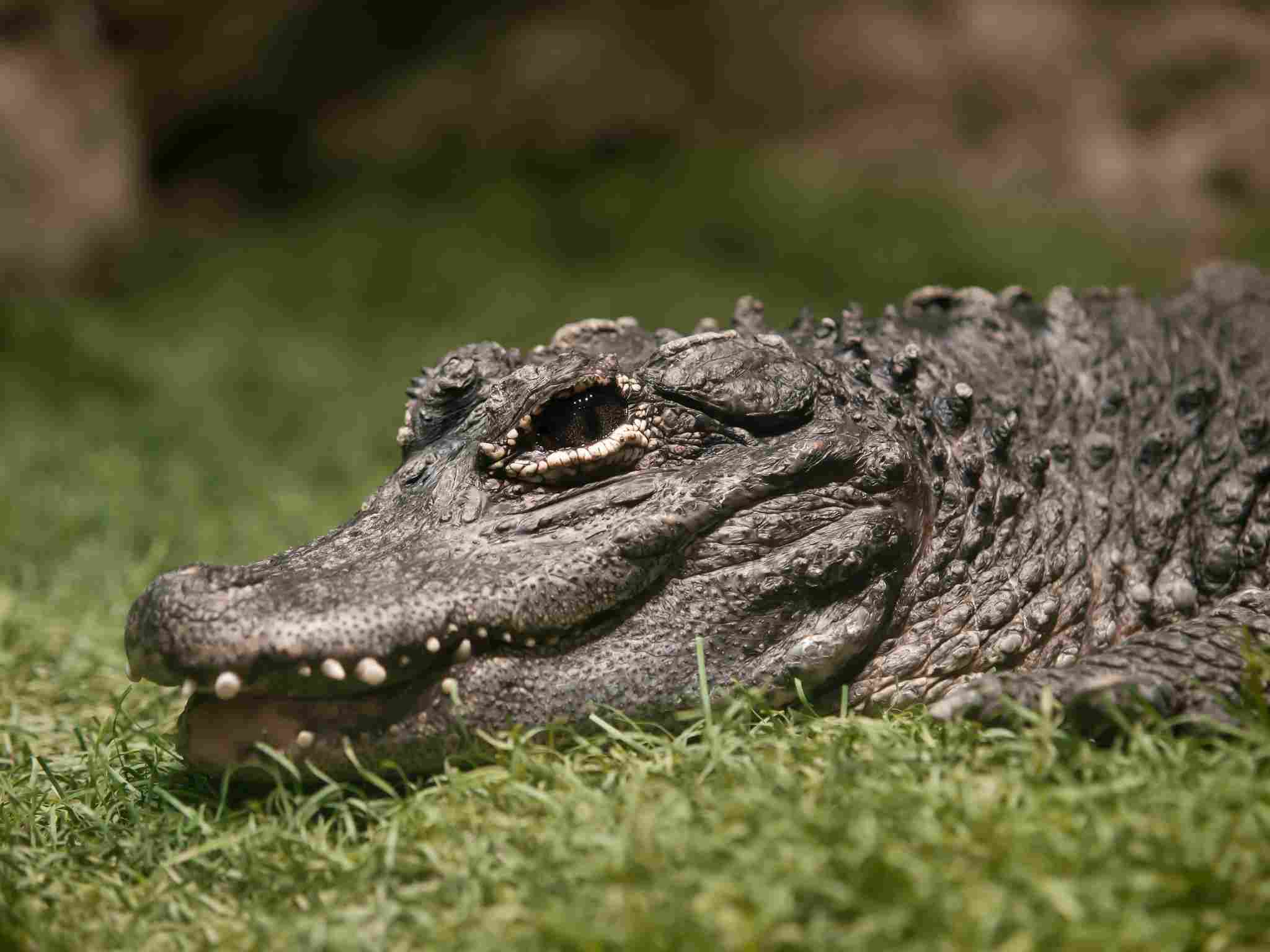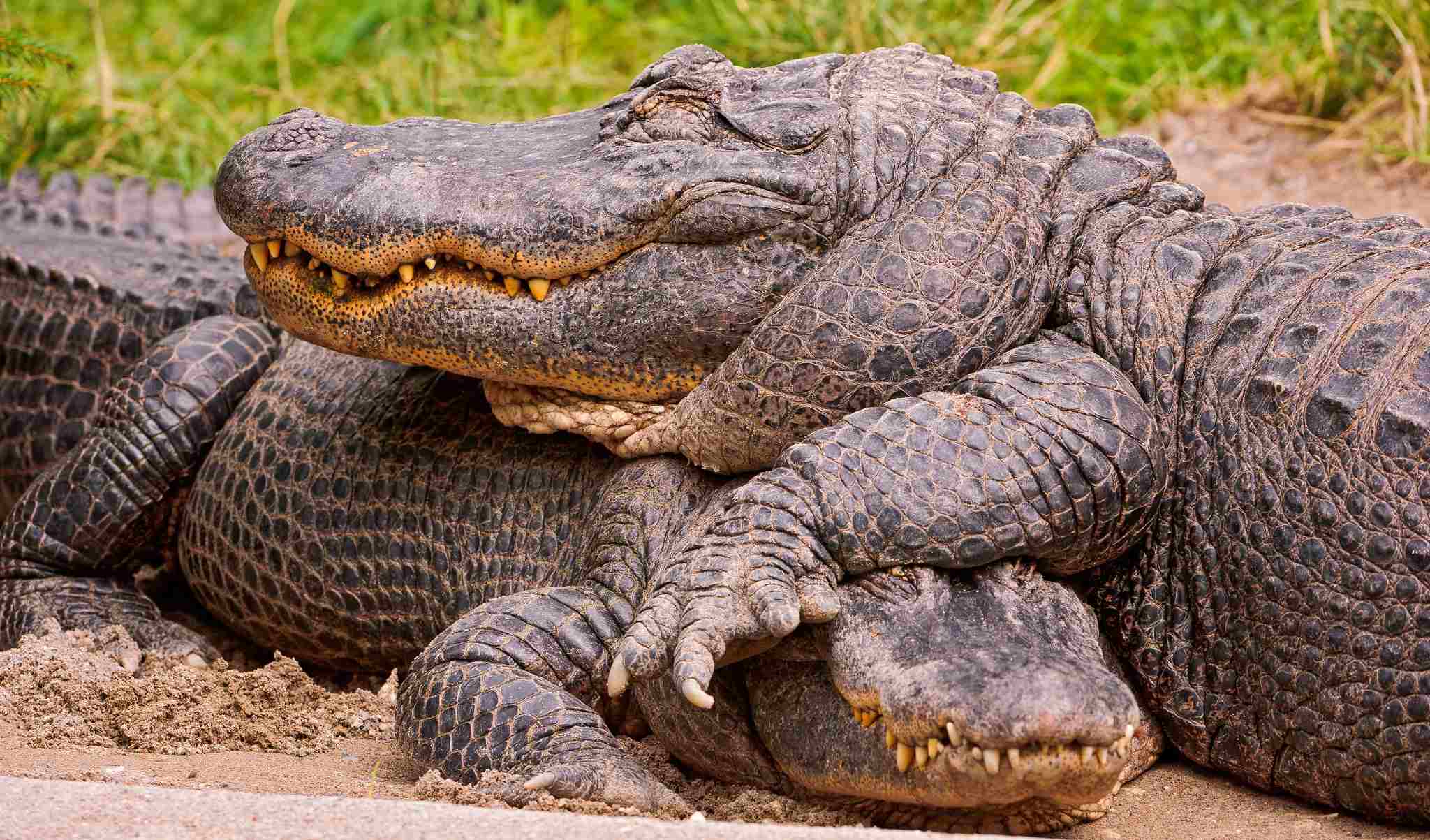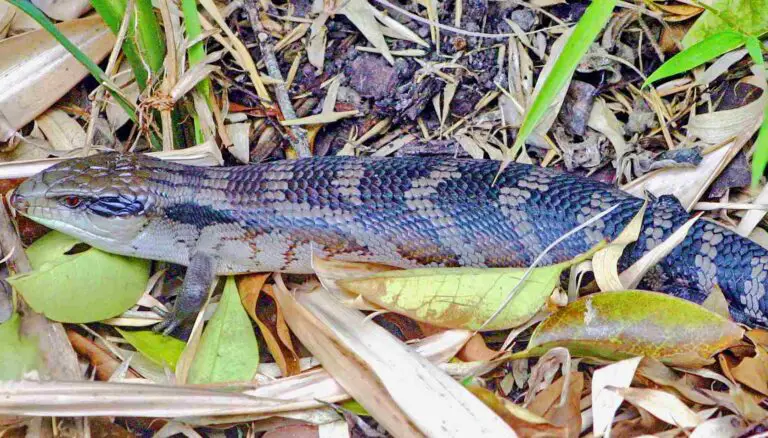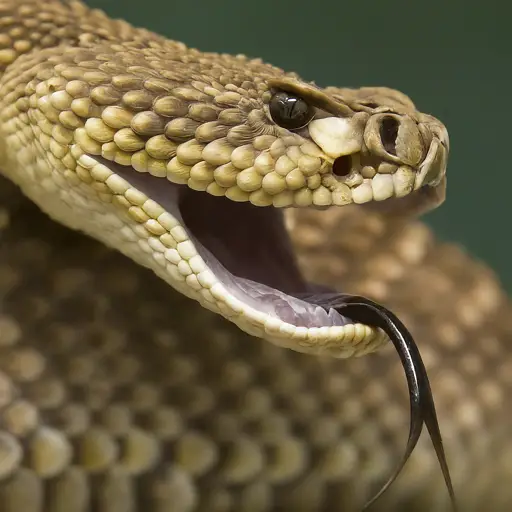23+ Dangerous Animals In Georgia And Their Characteristics
Examples of dangerous animals in Georgia are the Eastern Diamondback Rattlesnake, the Timber Rattlesnake, and the Cottonmouth, all of which are venomous snakes with potent venom. Other dangerous species include the Black Widow Spider, known for its toxic bite, and the Bald-Faced Hornet, a large aggressive wasp. Georgia also has large predators like the Alligator and Black Bear, which can pose risks if threatened, and invasive species like Wild Boar and Fire Ants, which can be aggressive and cause significant damage. Although many of these animals play crucial roles in the ecosystem, they can be hazardous to humans if encountered in the wrong context.
1. Eastern Diamondback Rattlesnake
The Eastern Diamondback Rattlesnake is the largest venomous snake in North America, renowned for its distinctive diamond-shaped patterns along its back and its powerful rattle at the end of its tail. Found in the southeastern United States, particularly in Georgia’s coastal plains and pine forests, this snake can grow up to eight feet in length. It has a potent venom that can cause severe tissue damage and systemic symptoms, making it one of the most dangerous snakes in the region. Although it tends to avoid human contact, when threatened, it can strike with remarkable speed and accuracy. Despite their fearsome reputation, Eastern Diamondbacks play a crucial role in controlling rodent populations, but caution is advised when exploring their habitats.
2. Timber Rattlesnake
The Timber Rattlesnake is another formidable venomous snake in Georgia, known for its patterned skin and distinctive rattle. Found in forested areas and mountainous regions, this snake can grow up to six feet in length and has a venom potent enough to cause serious harm to humans. Timber rattlesnakes are generally shy and reclusive, preferring to avoid confrontation, but they can be aggressive when provoked. Their striking coloration helps them blend into their surroundings, making them challenging to spot, which increases the risk of accidental encounters.
3. Copperhead
The Copperhead is a venomous snake native to Georgia, recognized by its copper-colored head and distinctive hourglass-shaped patterns on its body. This snake is usually found in wooded areas and near water sources. Although its venom is not as potent as other rattlesnakes, it can still cause significant pain and swelling, and medical attention is often required. Copperheads are generally non-aggressive but will bite if threatened. Their excellent camouflage makes them difficult to detect, leading to a higher risk of unintended encounters.
4. Cottonmouth (Water Moccasin)
The Cottonmouth, also known as the Water Moccasin, is a venomous snake found in Georgia’s swamps, marshes, and slow-moving rivers. This snake is notorious for its aggressive behavior when threatened, often displaying its namesake “cotton mouth” by opening its jaws wide to reveal the white interior. It can grow up to six feet long and has a venom that can cause significant tissue damage and systemic effects. Cottonmouths are strong swimmers and are often encountered near water, making them a potential threat to those engaging in outdoor activities like fishing or kayaking.
5. Black Widow Spider
The Black Widow Spider is one of Georgia’s most dangerous arachnids, easily recognized by its shiny black body and the distinctive red hourglass shape on its abdomen. These spiders prefer dark, secluded areas like woodpiles, sheds, and basements. Although bites are rare, they can be highly venomous, causing severe pain, muscle cramps, and other systemic symptoms. Medical attention is usually required for severe reactions. Despite their fearsome reputation, Black Widows play a role in controlling insect populations and typically avoid human contact unless provoked.
6. Brown Recluse Spider
The Brown Recluse Spider is another venomous spider found in Georgia, identifiable by its brown color and the violin-shaped marking on its back. This spider prefers hidden places like closets, attics, and garages. Although bites are rare, they can be extremely dangerous, with venom that can cause necrotic tissue damage and require medical treatment. The Brown Recluse is typically non-aggressive, but its secretive nature means that encounters can occur without warning, especially when reaching into hidden spaces.
7. Alligator

Alligators are large reptiles found in Georgia’s swamps, rivers, and lakes. They can grow to over 13 feet in length and weigh more than 1,000 pounds, making them formidable predators. Alligators are generally reclusive and avoid human contact, but they can become aggressive if they feel threatened or if their territory is encroached upon. Attacks on humans are rare but can be deadly. These reptiles are protected by law, and their habitats are essential for maintaining ecological balance in Georgia’s wetland ecosystems.
8. Black Bear
Black Bears are the most common bears in Georgia, typically found in the northern mountainous regions and some southern swamps. While generally non-aggressive, Black Bears can become dangerous when they feel threatened or if they are protecting their cubs. They are omnivores with a keen sense of smell, which sometimes leads them into residential areas in search of food. Human-bear encounters can be minimized by taking precautions, such as securing trash cans and avoiding feeding them. Despite the risks, Black Bears are an important part of Georgia’s wildlife heritage.
9. Coyote
Coyotes are adaptable canids found throughout Georgia, from rural areas to urban environments. While they are typically shy and avoid humans, they can pose a threat to pets and, in rare cases, to people, especially when they become habituated to human presence. Coyotes are opportunistic predators and scavengers, feeding on a variety of food sources, including small mammals and discarded human food. Their adaptability has allowed them to thrive, but it also brings them into closer contact with people, necessitating measures to minimize conflicts.
10. Bobcat
The Bobcat is a medium-sized wild cat found in Georgia, typically in wooded or semi-wooded areas. Recognized by its tufted ears and spotted fur, the Bobcat is a skilled hunter, preying on small mammals and birds. While generally elusive and avoiding human contact, Bobcats can pose a threat to small pets and livestock. Encounters with humans are rare, but the potential for conflict increases in areas where human development encroaches on their habitats. The Bobcat is an essential predator in maintaining the balance of local ecosystems.
11. Wild Boar (Feral Hog)
Wild Boars, or Feral Hogs, are invasive species in Georgia, known for their destructive behavior and aggressive nature. They can grow to considerable size, with males weighing up to 200 pounds or more. These animals are notorious for rooting up landscapes, damaging crops, and posing a threat to native wildlife and ecosystems. Although generally avoiding humans, Wild Boars can be dangerous if provoked or cornered, with their sharp tusks and unpredictable behavior posing risks to people and livestock.
12. Fire Ants
Fire Ants are invasive insects in Georgia, famous for their painful and aggressive stings. Found in large colonies, these ants build mounds in open areas, like lawns, fields, and along roadsides. Fire Ant stings can cause intense pain, swelling, and, in some cases, severe allergic reactions that require immediate medical attention. They are highly territorial and will swarm in response to perceived threats, which can lead to multiple stings in a single encounter. Fire Ants have become a significant pest problem in Georgia, impacting agriculture, wildlife, and public safety.
13. American Dog Tick
The American Dog Tick is a common tick species in Georgia, known for its potential to transmit diseases like Rocky Mountain spotted fever and tularemia. These ticks are typically found in grassy and wooded areas, where they wait to latch onto passing hosts, including humans and pets. Their bite can lead to serious health issues if not detected and treated promptly. The American Dog Tick poses a risk to outdoor enthusiasts, so precautions like wearing long sleeves and using insect repellents are recommended to reduce the risk of tick bites.
14. Lone Star Tick
The Lone Star Tick is another prevalent tick species in Georgia, recognized by the white dot or “lone star” on the female’s back. This tick is known to transmit diseases like ehrlichiosis and can cause alpha-gal syndrome, a condition leading to red meat allergies in some people. Lone Star Ticks are typically found in wooded and grassy areas, where they wait for hosts to pass by. Given their potential to transmit diseases, precautions like wearing protective clothing and conducting thorough tick checks after outdoor activities are essential to prevent bites and their associated risks.
15. Brown Dog Tick
The Brown Dog Tick is a common tick species in Georgia, often found in homes and dog kennels. Unlike other ticks that prefer outdoor habitats, this tick can complete its entire life cycle indoors, making it a persistent problem in households with pets. The Brown Dog Tick can transmit diseases like ehrlichiosis and canine babesiosis, posing risks to both humans and pets. Regular grooming and tick prevention measures for pets are crucial to minimize the chances of an infestation and to reduce the risk of disease transmission.
16. Yellowjacket Wasp
Yellowjacket Wasps are aggressive insects found throughout Georgia, known for their distinctive black-and-yellow stripes and painful stings. These wasps build nests in the ground or within structures and are highly territorial. They often become more aggressive in late summer and early fall when food sources are scarce. Yellowjacket stings can cause severe pain and, in some cases, allergic reactions that require medical attention. Their aggressive behavior and tendency to swarm in response to threats make them a significant hazard during outdoor activities and events.
17. Bald-Faced Hornet
The Bald-Faced Hornet is a large, aggressive wasp found in Georgia, easily recognizable by its black-and-white coloration. These wasps build paper-like nests in trees, shrubs, and eaves of buildings, and they aggressively defend their territory. Their stings are extremely painful and can cause severe allergic reactions in some individuals. Bald-Faced Hornets can swarm in response to perceived threats, making them a significant hazard for those who encounter their nests.
18. Cicada Killer Wasp
The Cicada Killer Wasp is a large and intimidating wasp found in Georgia, known for its striking black and yellow stripes. Despite their formidable appearance, these wasps are not typically aggressive toward humans and are more interested in capturing cicadas to feed their larvae. They build burrows in sandy or loose soil, and while their stings are painful, they are generally not as aggressive as other wasps. However, if provoked, they can sting, causing discomfort and potential allergic reactions.
19. Carpenter Bee
Carpenter Bees are large bees found in Georgia that are known for drilling into wood to create nesting sites. They resemble bumblebees but with a shiny, hairless abdomen. While male Carpenter Bees are aggressive in behavior, they lack stingers, whereas females, though less aggressive, can sting if provoked. The primary threat from Carpenter Bees is their damage to wooden structures, which can weaken buildings over time. Despite this, they play a role in pollination and are generally not aggressive toward humans.
20. Scorpion (Southern Devil Scorpion)
The Southern Devil Scorpion is the only scorpion species commonly found in Georgia. These small, reddish-brown scorpions typically inhabit wooded areas, under rocks, and in dark, damp locations. Although their sting can be painful, it is generally not life-threatening to humans, similar to a bee sting. Scorpions tend to be reclusive and only sting when they feel threatened. Despite their ominous name, they pose a relatively low risk compared to other dangerous animals in Georgia.
21. Great Horned Owl
The Great Horned Owl is a large and powerful bird of prey found throughout Georgia. Known for its tufted “horns” and deep hoots, this owl is a skilled hunter that preys on small mammals, birds, and reptiles. While generally not a threat to humans, the Great Horned Owl can be aggressive when protecting its nest or territory. Its sharp talons and strong beak make it a formidable adversary if provoked. Despite this, it plays a crucial role in controlling rodent populations.
22. Red-Tailed Hawk
The Red-Tailed Hawk is a common bird of prey in Georgia, known for its reddish-brown tail and broad wingspan. These hawks are skilled hunters, preying on small mammals, birds, and reptiles. While they are generally not a threat to humans, they can be aggressive when protecting their territory or during nesting season. Their sharp talons and beaks make them capable of inflicting injury if they feel threatened. Despite their potential aggression, Red-Tailed Hawks are important for maintaining ecological balance.
23. Peregrine Falcon
The Peregrine Falcon is one of the fastest birds of prey in the world, found in Georgia’s urban areas and coastal regions. Known for its incredible speed and agility, this falcon preys on birds, small mammals, and insects. Although not a direct threat to humans, Peregrine Falcons can be aggressive when defending their nests or hunting. Their sharp talons and beaks can cause injury if they feel threatened. Peregrine Falcons play a crucial role in controlling bird populations and are often admired for their speed and hunting prowess.
24. Copperbelly Water Snake
The Copperbelly Water Snake is a non-venomous snake found in Georgia’s wetlands and marshy areas. Despite its name, it does not have the venomous qualities of its namesake, the Copperhead. This snake is typically dark with a coppery orange underside. Although it is generally non-aggressive, the Copperbelly Water Snake can bite if threatened or cornered. It plays a key role in controlling amphibian and fish populations in its habitat. Given its non-venomous nature, it poses little risk to humans but can cause alarm due to its resemblance to other dangerous snakes.
| Number | Description |
| 1 |
Eastern Diamondback Rattlesnake: Largest venomous snake in North America; potent venom.
|
| 2 |
Timber Rattlesnake: Venomous snake found in forested areas; potent venom and striking pattern.
|
| 3 |
Copperhead: Venomous snake with a copper-colored head; potent venom causing severe pain.
|
| 4 |
Cottonmouth (Water Moccasin): Venomous snake with a white mouth; aggressive when threatened.
|
| 5 |
Black Widow Spider: Highly venomous spider with a black body and red hourglass shape.
|
| 6 |
Brown Recluse Spider: Venomous spider with a brown body and violin-shaped marking.
|
| 7 |
Alligator: Large reptile found in swamps and rivers; can be aggressive if threatened.
|
| 8 |
Black Bear: Generally non-aggressive bear; can pose risks if threatened or protecting cubs.
|
| 9 |
Coyote: Adaptable canid; generally avoids humans but can threaten pets and livestock.
|
| 10 |
Bobcat: Medium-sized wild cat; generally elusive but can threaten small pets.
|
| 11 |
Wild Boar (Feral Hog): Destructive and aggressive; can pose risks to people and livestock.
|
| 12 |
Fire Ants: Aggressive ants with painful stings; can cause severe allergic reactions.
|
| 13 |
American Dog Tick: Tick species that can transmit diseases like Rocky Mountain spotted fever.
|
| 14 |
Lone Star Tick: Tick species with a white dot; can cause alpha-gal syndrome (red meat allergy).
|
| 15 |
Brown Dog Tick: Tick species that can infest homes; transmits diseases to pets and humans.
|
| 16 |
Yellowjacket Wasp: Aggressive wasp with painful stings; can swarm when provoked.
|
| 17 |
Bald-Faced Hornet: Large aggressive wasp; stings are painful and can cause severe allergic reactions.
|
| 18 |
Cicada Killer Wasp: Large wasp; generally not aggressive but stings when provoked.
|
| 19 |
Carpenter Bee: Large bee that drills into wood; females can sting if provoked.
|
| 20 |
Scorpion (Southern Devil Scorpion): Only scorpion in Georgia; sting is painful but not life-threatening.
|
| 21 |
Great Horned Owl: Large bird of prey; aggressive when defending its territory.
|
| 22 |
Red-Tailed Hawk: Common bird of prey; aggressive during nesting season or when defending territory.
|
| 23 |
Peregrine Falcon: Fastest bird of prey; aggressive when defending territory or hunting.
|
| 24 |
Copperbelly Water Snake: Non-venomous snake; can bite if threatened or cornered.
|
